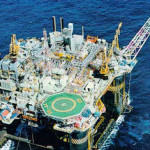An alternative oil investment that hinges on infrastructure needs

The sharp decrease in oil prices over the past six months undoubtedly has pained advisers and investors interested in the energy sector.
Oil prices dropped sharply last week, reaching five-year lows. For the first time since July 2009, the price of benchmark U.S. oil fell below $61 a barrel.
But that doesn’t mean there are no investment opportunities in energy, particularly since capital-intensive oil and gas companies remain in need of fresh funds to explore, drill and build pipelines.
“In times like these, with increased volatility in the energy markets, structure matters and is really the primary key to our success,” said Zachary Klehr, executive vice president of Franklin Square Capital Partners. It is offering the FS Energy & Power Fund, a nontraded business development company with $3.5 billion in assets under management at the end of September.
Franklin Square is the sponsor of a variety of nontraded BDCs, a small but fast-growing segment of the illiquid-alternatives asset class of investments, sold primarily through independent broker-dealers.
BDCs typically are closed-end investment companies that invest primarily in the debt and equity of private companies. Yields can be attractive because of the BDCs’ exposure to high credit risks amplified by leverage.
Investors are running away from the energy sector. The S&P 500 Energy Index at the end of trading last Wednesday had declined 14.7% year-to-date; over the same time, the S&P 500 index was up 9.6%.
INVESTORS PULL CASH
According to Morningstar Inc., total assets in equity energy mutual funds have dropped 26.7% since June and totaled $20.6 billion at the end of November. As the value of those funds was sliding, investors were pulling their cash from them — to the tune of an estimated $900 million from June through November, according to Morningstar research.
Advisers clearly need to be vigilant when investing in energy companies at the moment, said Guy Adami, chief market strategist and director of adviser advocacy at Private Advisor Group.
Advisers should be concerned not only about “the macro issues a falling crude price creates but about some individual stocks that may see further downside,” said Mr. Adami, who appears regularly on CNBC.
On Nov. 26, Seadrill Ltd., with the ticker SDRL, reported a less-than-stellar third quarter. And what really spooked investors was the announcement that Seadrill was suspending its dividend.
“Since that announcement, the stock price has been nearly cut in half,” Mr. Adami said. “One has to wonder if SDRL was a one-off or the first of many.”
Seadrill shares closed last Wednesday at $11.31, down a stunning 72.5% for the year.
Mr. Klehr said that now is the time a nontraded BDC, which raises money at a fixed rate, can take advantage of such severe disruptions in the market.
“Our FS Energy & Power Fund highlights the importance of the nontraded BDC structure in two ways,” he said. “First, we focus our investment at the top of the capital structure, with the predominance of our investments in senior secured debt. This focus enhances downside protection during these periods of volatility.”
“Second, our nontraded, continuously offered BDC structure allows us the opportunity to raise capital even during these periods of market dislocation without having to contend with redemptions, like open-end funds,” Mr. Klehr said. “We have fresh capital to deploy to take advantage of the opportunities we are currently seeing in the market.”
The net asset value of a share in the FS Energy & Power Fund is $10.30. Last Wednesday, the company registered with the Securities and Exchange Commission to sell another 86,400,000 common shares.
Nontraded BDCs, like nontraded real estate investment trusts, are often criticized because they offer almost no liquidity, meaning that investors can’t pull cash from the fund until it has a listing or merger.
Mr. Klehr’s argument is that the nontraded BDC manager is better off than managers of open-ended energy mutual funds. The nontraded BDC manager doesn’t have to contend with a plummeting value of assets under management that causes clamoring clients to withdraw funds in a rush for the exits. Instead, advisers tell their clients to sit tight, and the manager is free to raise fresh money and buy assets on the cheap.
At the end of September, more than 60% of the FS Energy & Power Fund’s portfolio was in senior secured loans and bonds. The fund is allocated across the five energy subsectors, with the heaviest weightings in “upstream,” meaning exploration and production, and “service and equipment,” which includes services for oil and gas exploration and support for the power industry. At that time, the fund was 51% allocated to “upstream” and 33% allocated to “service and equipment.”
Susan Kelly, manager of alternative financial strategies at Commonwealth Financial Network, noted that the fund’s NAV is down from $11 per share, but said she remains sanguine.
“When the market is soft, there’s an opportunity for funds that have capital ready to go and purchase loans and bonds at lower prices,” she said. “We’ve been very happy with them. The fund has done what it promised to do.”
Source: InvestmentNews – An alternative oil investment that hinges on infrastructure needs





























